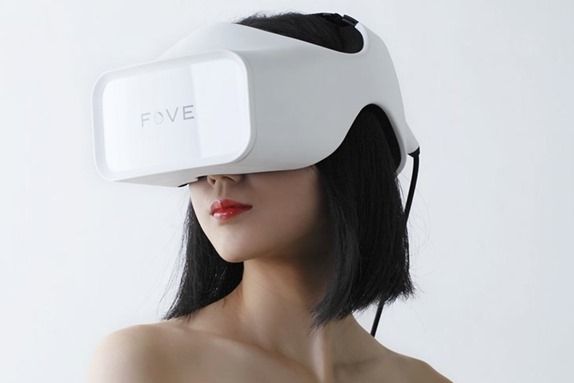Virtual reality is becoming increasingly popular. With amazing 3D virtual visuals, it provides an almost real-time immersive experience, making you feel like you are part of the virtual world. Many 3D viewing technologies have been introduced, including stereoscopic view.
Stereoscopic View
Stereoscopic view involves presenting different images to your left and right eyes, creating a 3D effect in your mind. Smartphone-based VR goggles offer incredible 3D visualizations and 360-degree experiences. This article explores the major differences among various 3D VR goggles in the market.
Oculus Rift
Oculus Rift, initially created by Palmer Luckey, an enthusiast of the virtual world, played a significant role in popularizing virtual reality. After starting with a Kickstarter campaign that raised $2.4 million, Oculus Rift was acquired by Facebook for approximately $2 billion. It is one of the most advanced VR goggles available.
Prior to its official release, several vendors introduced their own 3D virtual reality goggles using Rift’s technology. Rift underwent extensive beta testing, resulting in significant improvements based on user feedback. Oculus Touch, a specialized controller for communication and navigation, was also developed. Oculus Rift is compatible with Windows.
Oculus Rift features an OLED screen with a resolution of 2160 x 1200 pixels, providing 1080 x 1200 pixels per eye. It boasts a 90 Hz refresh rate, a 110-degree viewing angle, and weighs less than 380 grams. It includes USB and HDMI ports for peripheral connectivity. Oculus Rift’s success stems from both its hardware quality and the support of a large developer community fostered by Facebook’s acquisition.
Project Morpheus
Sony developed Project Morpheus to visualize PlayStation content. It includes an LED tag console for location tracking. What sets Morpheus apart is its high refresh rate.
Released in early 2016, Morpheus was optimized for Japanese games through collaboration with Capcom. It features an OLED display with a resolution of 1920 x 1080 pixels, offering 960 x 1080 pixels per eye. The viewing angle is 100 degrees, and the image refresh rate is 120 Hz.
Morpheus is sold as a package, bundled with PlayStation 4, games, and accessories. While this may seem like a limitation, Sony’s focus is on promoting their PlayStation ecosystem rather than just VR goggles.
Samsung Gear VR
Samsung Gear VR was launched in December 2014 and works exclusively with specific smartphones such as the Note 4, Samsung Galaxy S6, S6 Edge, S7, and S7 Edge. It relies on these smartphones to provide built-in sensors and displays for the VR experience.
The specifications depend on the attached smartphone, including pixel ratio and viewing angle. It features a proximity sensor to detect when the goggles are worn and a touchpad for navigation within the virtual reality environment.
Samsung collaborated with Oculus to provide high-quality VR experiences. While it excels with specific Samsung smartphones, it is not compatible with other devices.
Google Cardboard
Google Cardboard provides a cost-effective way to experience virtual reality using a simple cardboard template. It can be customized with lenses, magnets, rubber bands, and an optional NFC tag to enhance the VR experience.
Google Cardboard relies on a smartphone for all VR functions, supporting display sizes of up to 6 inches. Its simplicity and low cost make it an accessible choice for VR enthusiasts, although it lacks advanced features found in other technologies.
HTC Vive
HTC and Valve collaborated to create HTC Vive, a sophisticated virtual reality headset. It features unique capabilities, including head tracking and room-scale experiences.
HTC Vive incorporates two HD displays, each with a resolution of 1080 x 1200 pixels and a 90 Hz refresh rate. The device includes approximately 70 sensors for precise tracking. Users can enjoy features such as night vision and free movement within the virtual environment.
ZEISS VR One
Zeiss VR One offers a simplified approach to virtual reality. It consists of a headset with lenses, and users insert their smartphone to power the VR experience.
Zeiss VR One’s capabilities depend on the connected smartphone. It supports display sizes ranging from 4.7 to 6 inches. While it lacks advanced features, its affordability at 99 Euros makes it an attractive option for VR enthusiasts.
Starbreeze StarVR
Starbreeze StarVR is a quality product from the Swedish company Starbreeze. It was originally released under the name VR InfinitEye and was developed with a focus on gamers.
StarVR features high-resolution displays and a wide viewing angle, covering a significant portion of the user’s field of vision. It includes two 5.5-inch OLED screens with a resolution of 2560 x 1440 pixels each, providing an immersive experience for gamers.
Microsoft HoloLens
Microsoft’s HoloLens goes beyond virtual reality and introduces mixed reality. It enables users to interact with both real-world and computer-generated images, commonly known as holograms. This technology has various potential applications beyond gaming.
HoloLens operates independently and does not require connections to computers or consoles. Its unique design merges the virtual and real worlds, offering exciting possibilities for entertainment and beyond.
Fovea
Fovea VR goggles, introduced through a Kickstarter project, stand out with their advanced eye-tracking controllers. They provide users with an immersive experience by tracking and interpreting eye movements within the virtual world.
Fovea features a 5.8-inch screen with a resolution of 2560 x 1440 pixels, a 90 Hz refresh rate, and eye tracking accurate to 0.2 degrees. It offers a 100-degree field of view and connects via USB 3.0. While eye tracking control is a unique feature, it may require some practice to master.
